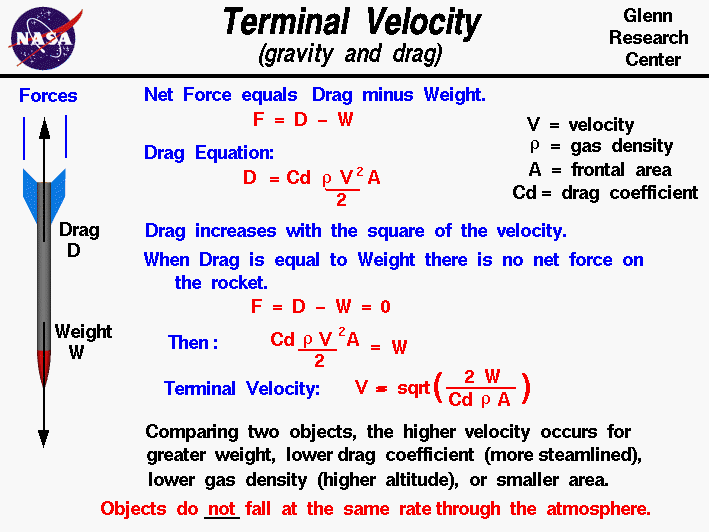Velocity
Squared... and yes...
Really..
Can't tell if you are messing with the folks on the forum or if you really haven't noticed that the "c" in that expression is the vacuum speed of light? E = mc
2 is the expression for energy of a particle moving at relativistic speeds.
c is a constant. It is
not the speed of moving body. That speed is comprehended in the relativistic mass
m. Rendered as E = m
oc
2 it is understood to be the rest energy of a body with rest mass m
o.
https://hyperphysics.phy-astr.gsu.edu/hbase/hframe.html
In any event, seriously and for real, the
speed of the rocket falling through air will depend upon the mass. The damage done by the impacting rocket penetrating the thing with which it collides will depend upon the
force per unit area during the collision. The force of the impact is the rate at which the
momentum of the rocket changes during the collision -- momentum is the product of
mass and
velocity (speed, for collision constrained to one dimension).
Look here
https://hyperphysics.phy-astr.gsu.edu/hbase/colcon.html#c1
If you scroll up to the post where I did the math, you'll see that the terminal speed of the rocket goes as the square-root of the mass. This means that the momentum of the rocket at terminal speed goes as the mass to the 3/2 power.
Which means, holding all other parameters equal (rockets of identical dimensions, each falling from high enough up to reach terminal speed) doubling the mass of the rocket will increase the impulse delivered at impact by about 2.8X. Assuming that the duration of the impact is the same, and that that the area of contact is the same, the 2X heavier rocket will exert a compressive stress on your skull 2.8 times greater than that exerted by lower mass rocket.
You can figure it in terms of energy, too. The work done by non-conservative forces is what brings the rocket to rest in your skull. Those non-conservative forces are the rigid forces holding your skull and brains together. So if the rocket has greater kinetic energy, there will be more energy available to scatter skull fragments and liquify brains.
The KE of the falling rocket, as Steve Shannon and others have pointed out, goes as the product of mass of the rocket and the square of the speed (which is denoted by "v", not "c"). There is also a factor of 1/2
https://hyperphysics.phy-astr.gsu.edu/hbase/ke.html#ke
Since terminal speed goes as the square root of mass, the KE of the falling rocket will go as the mass of the rocket to the
5/2 power. Which means, again for rockets of identical dimensions fallig at terminal speed, doubling the mass of the rocket will increase the kinetic energy delivered at impact by a factor of 5.7. that is to say, if you double the wight of the rocket -- holding all other dimensions the same -- you will increase the kinetic energy delivered by an impact at terminal speed by almost 6X/
Edit: Okay, that was embarrassing. Forgot how to square the square root. Kind of knocks the bottom out of all my highfalutin physics arguments.
After a moment's consideration, I have decided that the square of the square root of m, multiplied by m, is probably m
2 --
not m
2.5. Accordingly, I revise my previous: Which means, again for rockets of identical dimensions falling at terminal speed, doubling the mass of the rocket will increase the kinetic energy delivered at impact by a factor of 4. That is to say, if you double the weight of the rocket -- holding all other dimensions the same -- you will increase the kinetic energy delivered by an impact at terminal speed by 4X
But really, it makes more sense -- in terms of the OP's concern -- to think about in terms of the impulse (change in momentum) delivered by the impactor.
Now, go ahead, tell met that is not the volts but the amps that make electricity dangerous. I've got a whole ranty bit I can unload on you if you want to try that one on.




